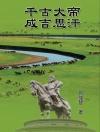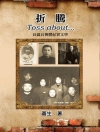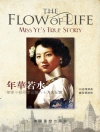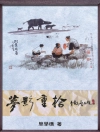In ‘Lavengro: the Scholar – the Gypsy – the Priest, ‘ George Borrow weaves a rich tapestry of self-discovery and cultural exploration. The narrative unfolds through a lyrical prose style, blending autobiographical elements with fiction as Borrow travels through the landscapes of 19th-century England and interacts with a diverse cast of characters, including gypsies, scholars, and religious figures. This semi-autobiographical work not only illuminates the complexities of identity but also offers a vivid portrayal of the tensions between traditional society and the marginalized, particularly the Romani people, challenging societal norms of Borrow’s time. George Borrow, a passionate advocate for the rights of the Romani people, was inspired by his own experiences and linguistic curiosities. His travels across England and his fascination with the gypsy culture are evident in this work, revealing his desire to bridge the gap between different social classes and understand their cultures and languages. Borrow’s profound interest in folklore and language, alongside his deep-seated sympathy for the oppressed, provide a compelling backdrop for this narrative. ‘Lavengro’ is a captivating read for those interested in cultural identity, social justice, and the poignant nuances of human connection. Borrow’s narrative not only transcends its time but remains relevant today, inviting readers to question their own perceptions of identity, belonging, and the notion of the ‘other.’ This profound exploration of self and society is a must-read for any scholar, student, or lover of literature.
Yazar hakkında
George Borrow (1803–1881) was a British author renowned for his unconventional lifestyle and literature. Grounded in his experiences, Borrow’s narratives often explore Romani culture, delving into the lives of characters who exist on society’s fringes. His work ‘Lavengro: The Scholar – The Gypsy – The Priest’, published in 1851, is an autobiographical novel that epitomizes his distinctive literary style, blending fact with fiction in a semi-romanticized depiction of his own life’s journey through various phases—scholar, traveler, and observer of the gypsy lifestyle. The book is acclaimed for its vivid descriptions and the portrayal of the author’s fascination with language and culture, enabling readers to glimpse 19th-century Britain from the perspective of a traveler who often mingled with the lower strata of society. Borrow’s prose, characterized by a keen eye for detail and a penchant for the portrayals of cultural interactions, reflects the complexity of his lived experiences and his intense curiosity about the world around him. Despite a mixed critical reception during his lifetime, modern critics appreciate Borrow for his linguistic prowess and the unique insight his works offer into the socio-cultural dynamics of his era. Other notable works by Borrow include ‘The Bible in Spain’ and ‘The Romany Rye.’ Borrow’s literary legacy continues to influence the study of British travel writing and the representation of marginal communities within literature.












